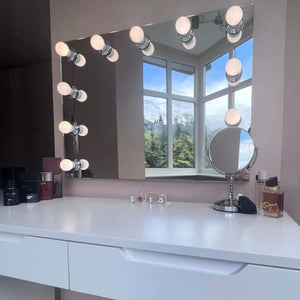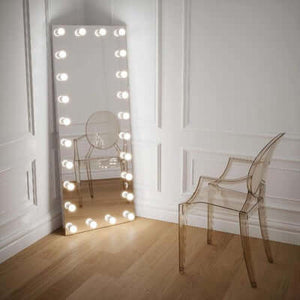Are you tired of your LED lights flickering and casting a shadow of doubt over their reliability? This annoying issue can disrupt your mood, strain your eyes, and even create a sense of unease. But don't worry; there's often a simple explanation behind this strange occurrence.
That said, this article will explore the common causes of LED flickering and provide practical solutions to help you restore your lighting system to its optimal performance.
1. Driver Malfunctions
LED lights operate on direct current (DC), but most homes supply alternating current (AC). LED lights use a component known as a driver to convert AC to DC. If this driver begins to fail or malfunctions, it can cause flickering as the power conversion becomes irregular. Over time, LED drivers can wear out due to age, heat, or poor quality.
A malfunctioning driver may also struggle to maintain a stable current, leading to intermittent flickering. If the driver is the source of the issue, replacing it with a new one should solve the problem. High quality LED lights often come with better drivers that are more durable and provide consistent power conversion, reducing the likelihood of flickering.
2. Voltage Fluctuations
LED lights rely on a constant flow of electricity to operate efficiently. When the electrical supply fluctuates, it can cause the LEDs to flicker. These fluctuations in voltage may occur due to various factors, including power surges, grid issues, or an overloaded circuit in the household.
In some cases, flickering can also result from an inconsistent power supply, which could be more pronounced in older homes or areas with unstable electrical grids. Installing voltage regulators or surge protectors can help mitigate these issues by stabilizing the flow of electricity and providing a more consistent power source for the LEDs.
3. Incompatible Dimmer Switches
Dimmer switches designed for older lighting technologies, such as incandescent bulbs, are often not compatible with LED lights. Traditional dimmers work by reducing the power supply to the bulb, which can lead to uneven performance with LEDs. When an incompatible dimmer is used with LED lights, it can cause flickering, especially when the light is dimmed.
LEDs require specific dimmers that can regulate power more effectively, as they use a much lower wattage compared to older bulbs. In some cases, the flicker may only occur at certain dimming levels. Replacing traditional dimmer switches with LED-compatible dimmers ensures smoother performance and eliminates flickering when adjusting light levels.
4. Loose or Faulty Wiring
Wiring issues are one of the more common causes of LED light flickering. Poor electrical connections or loose wiring can disrupt the steady flow of electricity to the lights, causing the current to fluctuate and the lights to flicker. In some cases, a loose wire in the circuit, fixture, or socket can intermittently interrupt the power supply, leading to noticeable flickering.
This issue can also arise from faulty connections within the light switch or socket itself. If wiring problems are suspected, it's essential to have a professional electrician inspect the system, as electrical issues can pose serious safety hazards. Tightening loose connections or replacing damaged wiring can resolve the flickering and ensure a reliable power supply to the LED fixtures.
5. Overloaded Circuits
In modern homes, many electrical devices are often connected to the same circuit, which can lead to overloading. If the electrical load on a circuit exceeds its capacity, it can cause voltage drops or fluctuations, which may lead to LED lights flickering. This is especially common when high-power devices, such as air conditioners or refrigerators, are running on the same circuit as the lights.
When these devices turn on, they can momentarily draw a large amount of power, causing a dip in voltage that affects the LED lights. Redistributing electrical devices across different circuits or reducing the number of devices connected to a single circuit can help alleviate this issue. In some cases, upgrading the electrical system to handle larger loads may be necessary.
6. Low-Quality LED Bulbs
The quality of LED bulbs can play a significant role in their performance. Cheap or low-quality LED bulbs often use inferior components that may not be able to handle minor fluctuations in voltage. These bulbs may lack proper circuitry to smooth out power variations, leading to frequent flickering.
In addition, low-quality LEDs may have poor heat dissipation, which can cause the internal components to degrade faster, resulting in flickering over time. Investing in higher-quality LED bulbs from reputable manufacturers can help prevent these issues.
7. Capacitor Issues
Capacitors are often used in LED light systems to smooth out electrical currents, ensuring that the power delivered to the LED remains stable. If the capacitor fails, it can result in uneven power delivery, causing the light to flicker. Capacitors can degrade over time, particularly in environments where the temperature fluctuates or in lights that are used for extended periods.
In some cases, replacing the capacitor can resolve the flickering issue. However, in other instances, it might be more practical to replace the entire light fixture, especially if it is an older model. Ensuring that your LED lights have high-quality capacitors can also help prevent future flickering problems.
Conclusion
LED flickering can be frustrating and sometimes even concerning. But don't let it dim your day. By understanding the common causes and implementing the appropriate solutions, you can effectively address this problem and restore your lighting system.
Liquid error (sections/article-template line 192): Invalid form type "36\n", must be one of ["product", "storefront_password", "contact", "customer_login", "create_customer", "recover_customer_password", "reset_customer_password", "guest_login", "currency", "activate_customer_password", "customer_address", "new_comment", "customer", "localization", "cart"]
 Alicia Hollywood Mirror 60cmx80cm
Alicia Hollywood Mirror 60cmx80cm Angelina Full Length Arch Hollywood Mirror 160 x 60cm
Angelina Full Length Arch Hollywood Mirror 160 x 60cm Angled Luna Mirror-Cheval Black
Angled Luna Mirror-Cheval Black Angled Luna Mirror-Cheval Gray
Angled Luna Mirror-Cheval Gray




































